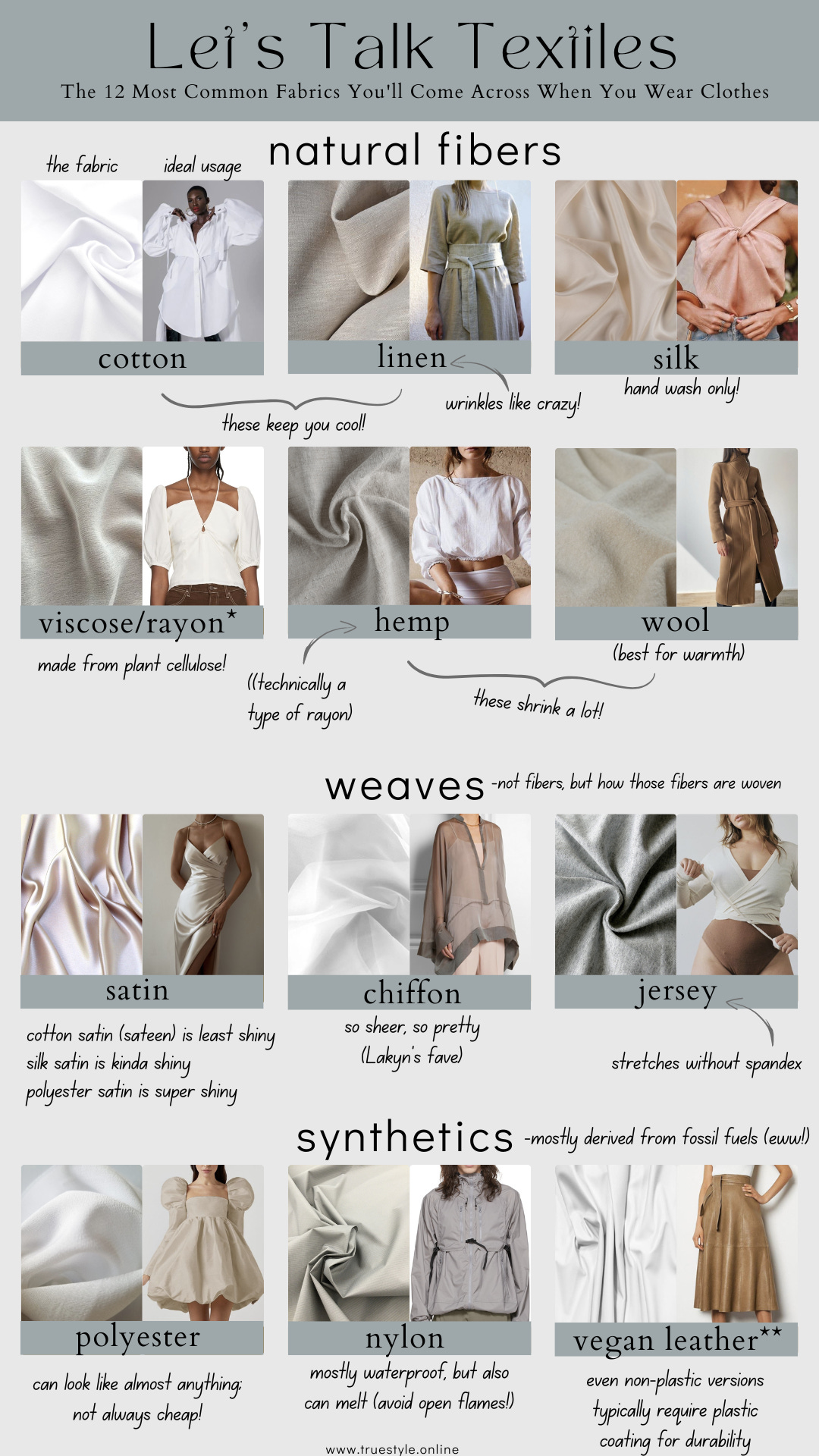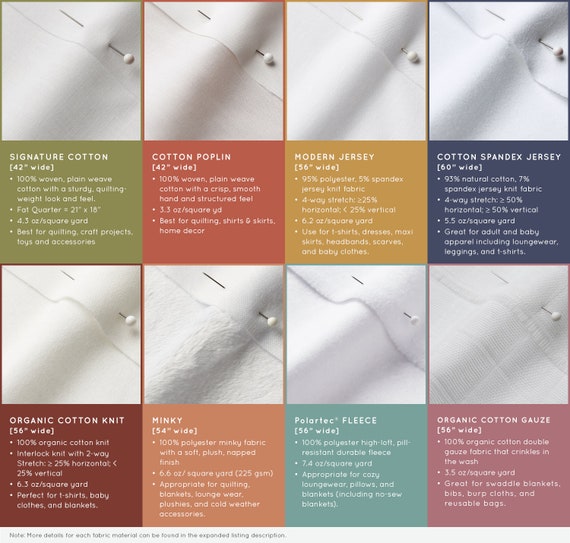5 Simple Techniques For All 4 Way Stretch Fabrics
5 Simple Techniques For All 4 Way Stretch Fabrics
Blog Article
The Definitive Guide for All 4 Way Stretch Fabrics
Table of Contents8 Simple Techniques For All 4 Way Stretch FabricsThe Basic Principles Of All 4 Way Stretch Fabrics Some Known Details About All 4 Way Stretch Fabrics What Does All 4 Way Stretch Fabrics Do?Rumored Buzz on All 4 Way Stretch FabricsAll 4 Way Stretch Fabrics Fundamentals ExplainedHow All 4 Way Stretch Fabrics can Save You Time, Stress, and Money.
As I likewise desire UV protection from my garments when I go out, I would pick a largely woven cotton fabric. Also the underclothing is better in cotton (No spandex bands anywhere near the skin). Have a look at the very best materials ideal for making summer season clothing. One even more factor to consider when buying the fabric is the method it will certainly after washing.A sure thing would certainly be to purchase the very least 10% extra textile. If you can acquire preshrunk fabric, this is the most effective. Preshrunk textile will certainly have tags that will certainly state" and so on. If you are searching for a material that will certainly not extend or lose shape, you can search for the "anti-sag" label.

If you are matching the shade, like choosing the lining for the major material or picking fabric to include as trim, this is particularly vital. The fabric display rooms will generally have a light well where you can see the fabric in sunshine (or a home window with good light from outside).
The All 4 Way Stretch Fabrics Ideas

Most materials have to do with 44 wide. When you most likely to purchase fabric, price quote just how much you desire first and after that go to the shop. Look into this blog post to know the solution to this often listened to question "Just how much fabric do I need". With a fat quarter, you will obtain an 18 broad by 22 long.
Some wonderful bargains can be had this means. In dressmaking, we purchase textile by the yard/meter.
The Main Principles Of All 4 Way Stretch Fabrics
In a quarter of a yard, you obtain a 9 by 44 strip of fabric, which is concerning 22 centimeters in size. According to the size of textiles, they might be called single-width and double-width.
Select materials that are not also difficult or rigid, or you wouldn't be comfortable in them. Bed linen, Denim, flannel, For chillier environments, pick wool (100% as well as woollen blends) wool tweeds, woollen crepe; it generally depends on what pants you are speaking concerning Tailored pants, Unstructured Pant, Combined, Denim.
Corduroy is comfy to use fabric to pick for trousers. All cotton textiles are great for children. You can choose a cotton satin stretch or a cotton twill or cotton satin or grass. Knit textiles are additionally fantastic for youngsters you can opt for wool knits. Interlock knits are dressmaking knits that extend throughout the grain.
What Does All 4 Way Stretch Fabrics Do?
Cotton lawn fabric in lovely prints is fantastic. Silk jersey is a fantastic material for sewing skirts, as is Ponte Roma knit material.
Drapey rayons, soft woollen, lycra blends, and stretch velvets are all appropriate for stitching skirts. Woollen (Woollen crepe has an excellent drape and offers adequate framework for coats; wool tweeds are excellent as well), Linen & Flannel. Raw silk, satin, taffeta, velvet, Lace, silk chiffon, and Fabric are all great for making dresses.
You can buy medium-weight materials with some spandex/elastane included for a suitable bodycon-type dress. For drapey dresses, you can choose light-weight textiles. Jersey has a drapey fit similar to this. Crepe, challis, and charmeuse are all drapey fabrics fit for this design. Look into these messages: Finest material for making casual dresses and tops; Names of different gowns. Rayon, Acetate, and cotton lining materials are famously used.
Light-weight cotton material, Cambric, Chintz, Twill, Faille, Seersucker, Poplin, light-weight woven broadcloth, batiste, bed linen, eyelet benefit making t-shirts and shirts. I like chiffon shirts. Silky satin textile benefits making ventilated tops. Examine out the article on the 7 finest materials for making tee shirts. Making serapes and scarves require different factors to consider for the fabric check out this article on the fabrics for making headscarfs When purchasing formed material (most of the patterned textile includes a width of 45 or 54 inches), there will certainly be pattern repeat in these materials, and this need to be considered when reducing fabric in addition to acquiring them i.e., if you intend to match the patterns at the joints.
All 4 Way Stretch Fabrics Things To Know Before You Get This
This post has the names of all the checkered patterns and this, stripe patterns. The motifs will be distributed in a scheduled style on the material. However you might see sometimes If the print is not positioned on the material appropriately, it can not be matched or lined up when built without distorting the material and the hang of the garment.


You can discover more about grain and grainline of material here. The textile weight is dependent on several aspects like the weave, fiber kind, etc and is usually denoted by GSM. GSM can vary from 60 -700; 700 being the GSM of really high-grade woolen textile. A denim fabric has a GSM of 400, relying on the weave.
One thing you have to maintain in mind is that higher material weight does not denote greater fabric high quality. It just is a sign of the suitability of the textile for a particular job. You can pass by high fabric weight fabric denim for a lightweight floating stole. Recognizing the textile weight is useful when comparing the same kind of materials, however even this will depend upon its application.
In a nutshell, the most important requirements to look for in the material you get are as adheres to (https://www.abnewswire.com/companyname/www.4waystretchfab.com_142290.html#detail-tab). The number of strings per inch of textile (yarns-per-inch).
The Single Strategy To Use For All 4 Way Stretch Fabrics
This is really essential in any type of textile. In top quality material, this equilibrium (either in numbers or in dimension) will certainly always be preserved. Procedures made use of on fabric to improve look and efficiency. The fibers that are woven to make the material will either be as a single hair or will be created by combining two threads (turned).
A two-ply thread is superior to a single-ply yarn.
If you are getting prepared to begin a brand-new embroidery job, choosing a textile will certainly be one of the most important step when you choose what you intend to make. After you've mosted likely to all the problem and expenditure of getting the stitching equipment you love, a pattern you enjoy, and a material you enjoy, you want the finished item to be a success, right? One way to accomplish that is to begin by making certain your material is absolutely ideal for the task.
All about All 4 Way Stretch Fabrics
For instance, if you're making a patchwork, you'll you could check here immediately intend to utilize quilter's weight cotton for best results. What if you want to make a thing of clothing? Just how do you know which material will offer you the very best outcome? Picking a textile simply since you enjoy the print or design on it isn't always the most effective technique.
In order to stay clear of doing a whole task for basically absolutely nothing, we've compiled some tips to aid you determine which textile is appropriate for your task. Allow's state you already have a project in mind; how do you find the right textile for it?
After that, consider the qualities you want the finished product to have. If apparel, will it be fitted or loosened? Dressy or daily? For warm climate or cold? Do you desire a solid shade or a print? If you are making a non-wearable item such as a cushion cover or potholder, use a tough textile such as canvas.
There is a lot info out there concerning fabrics, their characteristics, and their usages, it might reach be frustrating! So don't attempt to take it in all at when; simply start with the task available. Learn all you can concerning the fabric you use for this set project.
Report this page